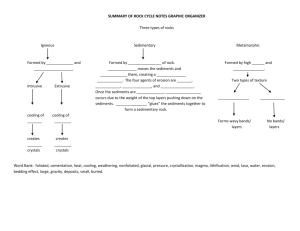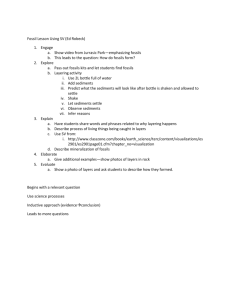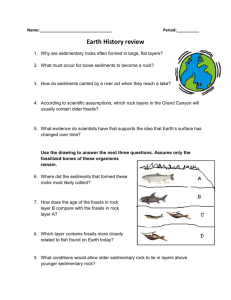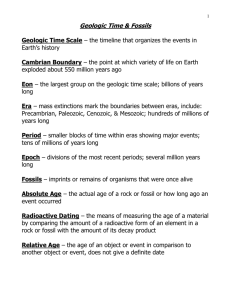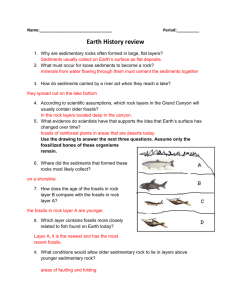Earth and Space Science: TEK 7a: N
advertisement
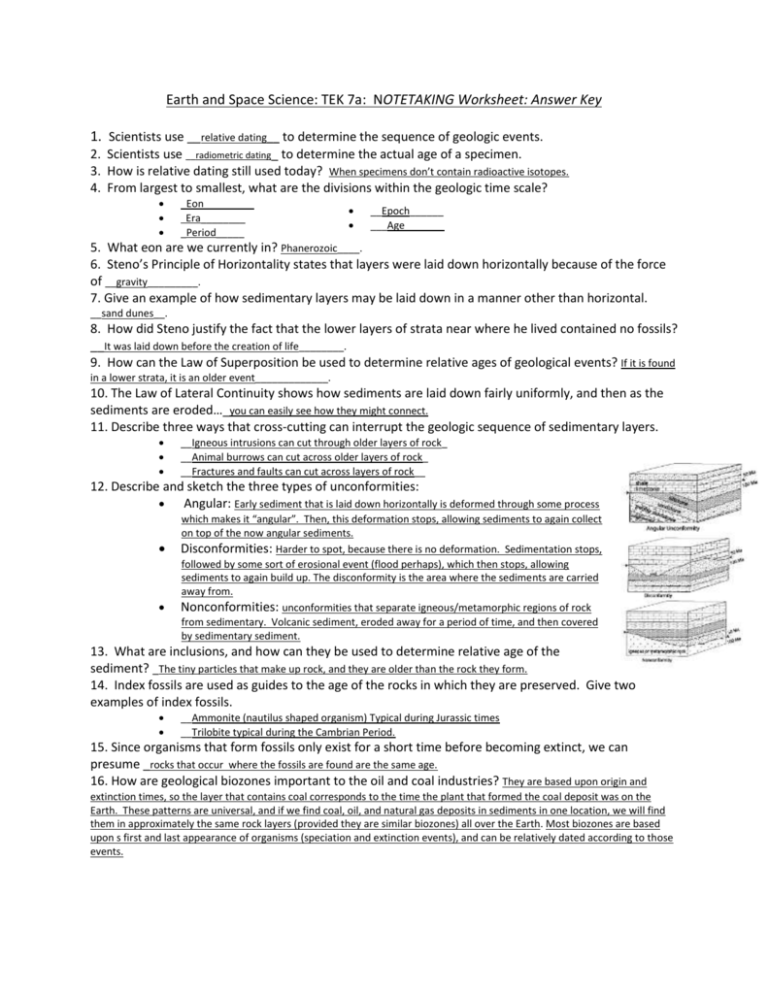
Earth and Space Science: TEK 7a: NOTETAKING Worksheet: Answer Key 1. Scientists use __relative dating__ to determine the sequence of geologic events. 2. Scientists use __radiometric dating_ to determine the actual age of a specimen. 3. How is relative dating still used today? When specimens don’t contain radioactive isotopes. 4. From largest to smallest, what are the divisions within the geologic time scale? _Eon_________ Era________ _Period_____ __Epoch______ ___Age_______ 5. What eon are we currently in? Phanerozoic____. 6. Steno’s Principle of Horizontality states that layers were laid down horizontally because of the force of __gravity_________. 7. Give an example of how sedimentary layers may be laid down in a manner other than horizontal. __sand dunes__. 8. How did Steno justify the fact that the lower layers of strata near where he lived contained no fossils? __It was laid down before the creation of life________. 9. How can the Law of Superposition be used to determine relative ages of geological events? If it is found in a lower strata, it is an older event_____________. 10. The Law of Lateral Continuity shows how sediments are laid down fairly uniformly, and then as the sediments are eroded…_you can easily see how they might connect. 11. Describe three ways that cross-cutting can interrupt the geologic sequence of sedimentary layers. __Igneous intrusions can cut through older layers of rock_ __Animal burrows can cut across older layers of rock_ __Fractures and faults can cut across layers of rock__ 12. Describe and sketch the three types of unconformities: Angular: Early sediment that is laid down horizontally is deformed through some process which makes it “angular”. Then, this deformation stops, allowing sediments to again collect on top of the now angular sediments. Disconformities: Harder to spot, because there is no deformation. Sedimentation stops, followed by some sort of erosional event (flood perhaps), which then stops, allowing sediments to again build up. The disconformity is the area where the sediments are carried away from. Nonconformities: unconformities that separate igneous/metamorphic regions of rock from sedimentary. Volcanic sediment, eroded away for a period of time, and then covered by sedimentary sediment. 13. What are inclusions, and how can they be used to determine relative age of the sediment? _The tiny particles that make up rock, and they are older than the rock they form. 14. Index fossils are used as guides to the age of the rocks in which they are preserved. Give two examples of index fossils. __Ammonite (nautilus shaped organism) Typical during Jurassic times __Trilobite typical during the Cambrian Period. 15. Since organisms that form fossils only exist for a short time before becoming extinct, we can presume _rocks that occur where the fossils are found are the same age. 16. How are geological biozones important to the oil and coal industries? They are based upon origin and extinction times, so the layer that contains coal corresponds to the time the plant that formed the coal deposit was on the Earth. These patterns are universal, and if we find coal, oil, and natural gas deposits in sediments in one location, we will find them in approximately the same rock layers (provided they are similar biozones) all over the Earth. Most biozones are based upon s first and last appearance of organisms (speciation and extinction events), and can be relatively dated according to those events.
